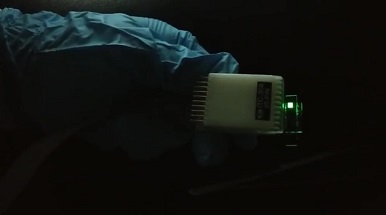
The research team led by Prof. Sergio Brovelli of the Department of Materials Science of the University of Milano-Bicocca, together with the research group led by Prof. Liang Li from Jiao Tong University and the Shanghai Institute of Ecological Safety and Pollution Control, developed innovative light emitting diodes (LEDs) with record efficiencies even at high operating temperatures, which are typically detrimental to traditional devices.
The results of the research have been published in Nature Photonics in the paper entitled “Suppression of Temperature Quenching in Perovskite Nanocrystals for Highly Efficient and Thermally Stable Light Emitting Diodes” (DOI: 10.1038/s41566-021-00766-2)
These results mark a turning point in artificial lighting technology. LEDs indeed generate heat during their operation: realizing emissive materials characterized by stable and efficient luminescence at high temperatures is therefore essential to obtain high performance LEDs for real world application.
What about the active material constituting these innovative LEDs?
«These LEDs are based on lead halide perovskite nanocrystals, which are extremely promising for artificial lighting technologies. However, similar to more traditional semiconductor nanostructures, these materials suffer from thermal quenching of light emission – explains Sergio Brovelli. – To date, synthetic strategies adopted for overcoming this limitation had the drawback of impeding direct charge injection, thus making the nanocrystals unsuitable as active material for LEDs. Thanks to the collaboration with our Chinese colleagues, we developed a surface chemistry approach that solves both problems».
The new synthetic strategy allowed to obtain, for the first time, LEDs based on lead halide perovskite nanocrystals with high light emission efficiency (external quantum efficiency as high as 19.3% with respect to 20% theoretical value) independent on temperature up to 100°C (higher than the typical operating temperature of LEDs).
«These new results open new perspectives to printable, low-cost and low power consumption artificial lighting devices».